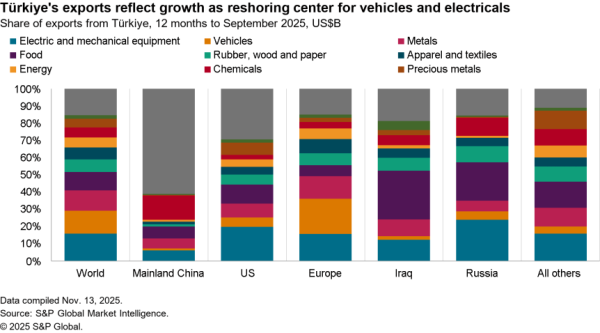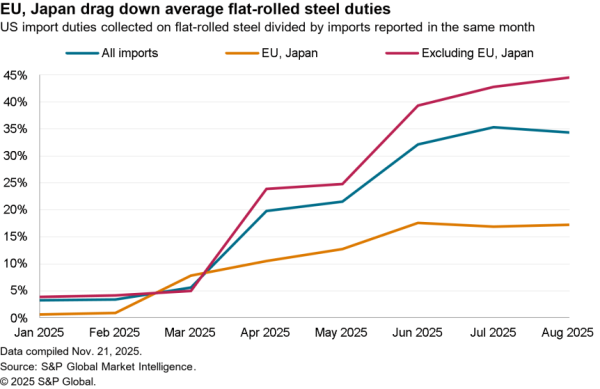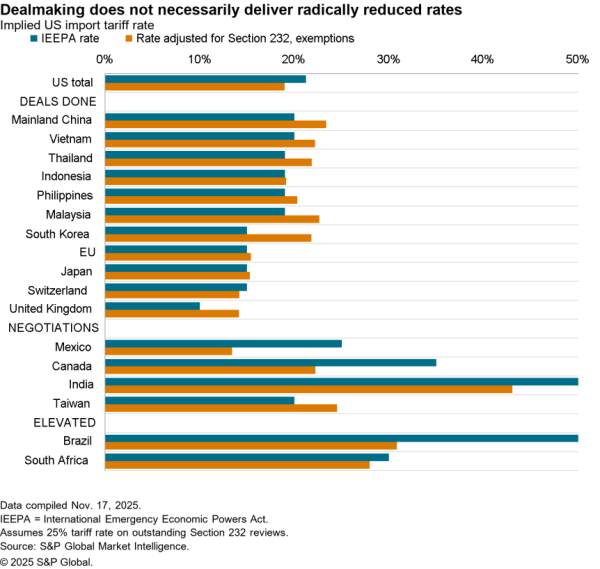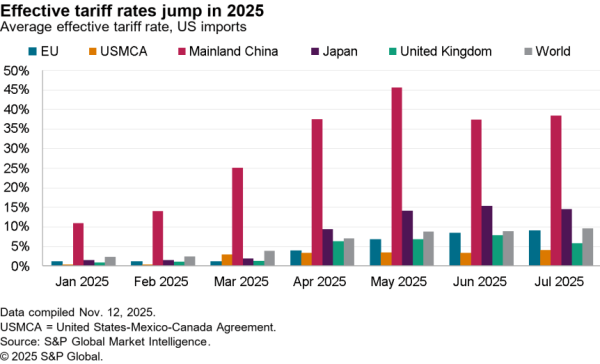The Port of Los Angeles saw a 17.3% year over year collapse in traffic in December, Panjiva’s analysis of official data shows. That included a 20.3% slump in imports and a 12.0% slide in exports. The drop makes for the fourth straight decline, though is in part due to temporary factors.
As outlined in Panjiva’s research of Jan. 15 there was a surge in shipments to beat tariff increases on imports from China in Dec. 2018, while a similar surge in 2019 was concentrated in 3Q. The slide in import traffic nonetheless made LA the worst performing major U.S. port in North America in December.

Chart segments change in containerized freight traffic through the Port of Los Angeles by origin. Calculations based on Port of Los Angeles official data. Source: Panjiva
Panjiva’s data shows shipments from ports in China including Hong Kong accounted for 62.8% of imports to LA in 2019 and saw a 5.6% drop for the year overall. That would suggest the trade war had a lasting as well as transitory effect.
The phase 1 trade deal may not make a major difference given tariff reductions are limited to just one category of products and only involve a cut in rates, not their removal.
Indeed, that’s led Port of Los Angeles Executive Director Gene Serok to state at the annual State of the Port that “the use of trade taxes to advance policy may now be the new normal“.
Indeed, the Trump administration may choose to widen its use of tariffs to try and control rising imports from Vietnam and Malaysia among others, as flagged in Panjiva’s 2020 Outlook series.
Shipments from Asia excluding China accounted for 30.7% of traffic inbound to Los Angeles. However, the port has struggled to gain traffic from those countries and there was actually a 2.5% drop in inbound shipments in 2019. Indeed, a loss of shipping services may have underpinned a 35.6% slide in shipments from Vietnam and a 40.9% drop in imports from Singapore. That’s only been partly offset by a 41.7% expansion in shipments from Japan and 19.9% from South Korea.
The resumption of services from Europe by THE Alliance meant rest-of-world traffic rose by 18.9% in 2019 as a whole, but even that reversed in 4Q.

Source: Panjiva
Major importers to LA from Japan and South Korea that have generated growing shipments are unsurprisingly focused on autos, construction equipment and electronics. Panjiva’s seaborne shipping data shows that imports linked to Toyota jumped 70.2% year over year in 4Q to reach 17,400 TEUs. There may be further growth if a wider U.S.-Japan trade deal can be reached.
Among auto-parts, shipments linked to Toyo Tire increased by 28.1% to 11,255 TEUs. Looking at industrials more broadly one of the largest shippers may have been Kubota, with shipments linked to the firm having expanded by 47.6% to 6,575 TEUs.

Source: Panjiva




